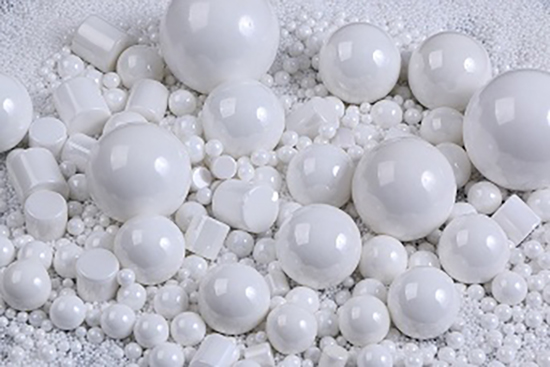

- 2020-11-10 10:25-
People in the industry know that the grinding media of sand mills mostly use glass beads, steel balls, zirconium silicate beads, zirconia beads, pure zirconia, etc., and the grinding media is one of the important factors affecting the efficiency of the sand mill. So in the face of a wide range of grinding media with different sizes, how to choose a suitable grinding media has become the core problem that everyone must solve. Let's take a look with Xiaoru.
1. The influence of the choice of zirconia beads on grinding
(1) Hardness
Mohs hardness (Mohs) and Vickers hardness (Vickers) are commonly used indicators. Generally, the higher the hardness of zirconia beads, the lower the wear rate of the beads. Judging from the wear of zirconia beads on the contact parts of the sand mill (dispersion disc, rod pin and inner cylinder, etc.), the hardness of the zirconia beads will wear more to the contact parts, but the smooth surface of the beads will affect the cylinder and the cylinder. The wear of the dispersing disc is relatively small, and the filling amount of the grinding beads, the viscosity of the material, the flow rate and other parameters can be adjusted to achieve a better optimization point.
(2) Particle size
The size of the zirconia beads determines the number of contact points between the beads and the material. The more contact points of the beads with a small particle size are in the same volume, the more effective collisions during the grinding process, and the greater the grinding efficiency. high. Under the same grinding time, when using small-diameter grinding beads, the fineness of the product is better than using large-diameter grinding media. But on the other hand, when grinding materials with relatively large initial particles, such as 100 micron materials, beads with D=1mm may not be used because the impulse of the small beads cannot reach the energy for sufficient grinding and dispersion. Use larger beads.
(3) Density
Density is expressed in terms of density (true density) and bulk density (false density) in normal documents. The molecular weight and percentage composition of various oxides determine the density of zirconia beads. Normally, the higher the density, the higher the density of the zirconia beads. Zirconium beads, the greater the kinetic energy generated by the rotation of the sand mill, the higher the grinding efficiency. But on the other hand, the greater the density of the grinding medium, the greater the wear on the contact parts (inner cylinder, dispersing disc, etc.) of the sand mill, so the coordination of the viscosity and flow rate of the material becomes the key. Low-density zirconia beads are suitable for low-viscosity materials, and high-density zirconia beads are suitable for high-viscosity materials.

(4) Reasonable filling rate
The filling rate of zirconia beads refers to the number of grinding beads required by the sand mill to achieve a better dispersion and grinding effect. If the filling rate of the grinding beads is too high, it is easy to cause the internal temperature of the sand mill to rise, and the cylinder can not radiate heat in time and shut down automatically. The filling rate of the grinding beads is too low, the grinding efficiency is low, and the medium loss is large. Therefore, a reasonable filling rate is one of the important factors to improve the grinding efficiency.
In the manual of sand mill, the filling rate is often expressed by volumetric measurement method, but in production, it must be converted into the actual filling quality of the medium. Calculation formula = effective volume of sand mill × filling rate × bulk density of grinding media.
2. Add grinding media
(1) The principle of replenishing grinding media
If it is found that the grinding efficiency of the grinder is reduced, it is a possible signal to add beads. Users can grasp the actual loss rate of beads according to their own process conditions, and make regular sieving and addition of beads.
(2) How to add grinding media
Due to the natural loss of the beads, the particle size of the beads will become smaller and smaller. In order to maintain a uniform filling volume and prevent the fine beads from clogging or entering the separation device, the beads should be screened and supplemented according to the life of the grinding medium and the user’s own process conditions. The amount of grinding media. Shanghai Root's suggestion is to check the wear of the beads after 500-600 working hours, and add a reasonable amount of new beads.
Previous:Previous:Calculation Method of Zirconium Beads in Grinding Media Next: Next:The Application of Zirconia in the Field of Structural Ceramics and Functional Ceramics